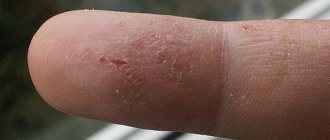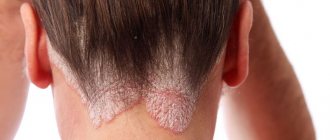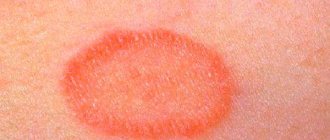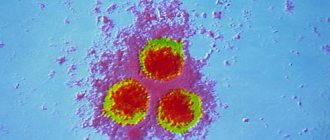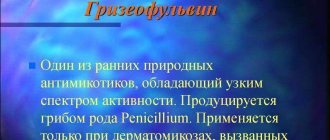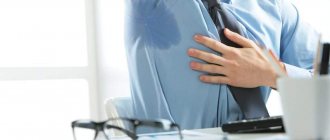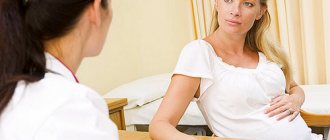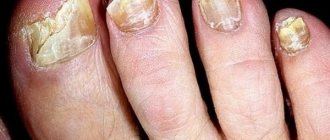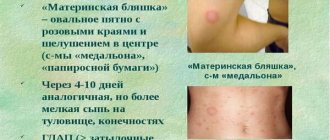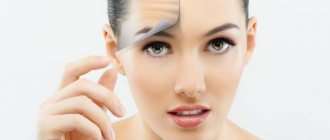Treatment at home
Is it possible to smear lichen with iodine?
This question is asked by many who face a similar problem. Iodine is effective only for certain types of lichen. For example, with its help you can easily get rid of small spots of ringworm; it is enough to treat them 3-4 times a day with iodine tincture (5%). If the spots continue to grow, you will need more effective formulations prescribed by your doctor. Treatment of deprivation with iodine is best done in combination with brilliant green. The skin will not be overdried if you follow the following scheme: treat the spots twice a day with brilliant green, twice with iodine, or alternating every other day 4 times with each composition. The course of treatment lasts 10 days or more. Against other forms of deprivation, treatment with iodine is ineffective.
Tar has long been famous for its ability to stop the inflammatory process and disinfect the skin. Traditional medicine recognizes its gentle effect and uses it to prepare popular preparations: tar soap, Wilkinson ointment, Vishnevsky ointment, etc.
The natural antiseptic exhibits bacteriostatic and bactericidal properties, which leads to rapid healing and renewal of the affected integument:
- Treatment at home can be carried out with a ready-made product in the form of tar soap. In dark soap, the mass fraction of the active substance is higher, and accordingly the medicinal properties are more pronounced. After soaping the problem area, leave it until completely dry. The procedure is carried out over two weeks.
- You can quickly cure lichen with a mixture of tar and butter. For the compress you will need the main components in a 1:1 ratio. The mixture is ground until a homogeneous mass is obtained, which, lightly rubbing, is applied to the sore skin. The healing mixture has a characteristic odor, so it is better to bandage the compress and leave it overnight. If redness appears in the treatment area, use zinc paste to neutralize the redness and dry the skin.
Boric acid also gives good results against lichen. Preparing this composition is easy and simple. You will need: 10 g of powder and a glass of boiling water. After the main component has completely dissolved, the mixture is left to cool. The resulting solution is used to treat the spots and areas around them according to the following scheme: 2 times a day for 7-10 days.
Each time before use, the boric acid solution should be heated. After the solution has been absorbed into the diseased skin, wear natural fiber underwear. At the end of treatment you should take a bath. If necessary, the course can be repeated.
The herpes virus is sensitive to ultraviolet radiation. Therefore, shingles responds well to treatment with the same-named physiotherapeutic procedures. At the initial stage of the disease, the pathogen will be destroyed by sunbathing.
You can get rid of pityriasis rosea, which is prone to relapse and does not respond to conservative treatment, in a solarium. If the spots disappear in the summer, but appear again in the winter, it means that the disease has become chronic. In this case, you will need a combination of ultraviolet radiation with drug therapy prescribed by a dermatologist.
Tsindol, which is an aqueous-alcohol solution of talc, zinc oxide and starch, is also considered a folk remedy. The suspension exhibits antiseptic, drying and healing properties. It is used even during lactation and pregnancy according to the scheme 3 times a day.
Under all varieties of this substance, birch tar is used to treat lichen. Even classical medicine believes that this is a highly effective remedy for dermatological diseases, because birch tar is used both by folk healers and in official medical recipes.
Due to their properties, drugs based on such an active substance have a strong antisymptomatic effect, contributing to the disappearance of rash, itching, peeling and other general and specific clinical manifestations of lichen.
Common folk recipes for anti-lichen medicines based on birch tar are:
- Tar and butter - the components of the future ointment are combined in a 1:1 ratio and mixed, after which they are applied to the skin for 5-8 hours. Daily systemic use of the ointment will help quickly cope with pityriasis rosea - the tar will stop the development of the disease, and the butter will strengthen the skin.
- Tar and ash - in this recipe, the ointment is created from birch tar and ash, which is obtained after burning a birch log. The ingredients are mixed in a ratio of 3 to 1 and applied to the skin for 2-3 hours. This recipe will help get rid of not only scaly lichen, but also psoriasis.
- Tar and fish oil - fat for the recipe is needed directly in liquid form, because the drug produced by most pharmaceutical companies in the form factor of jelly capsules is not suitable for creating an ointment. The ingredients are mixed in equal parts and applied to a gauze bandage prepared in advance (gauze folded several times is suitable). After production, the compress is applied and fixed for 2-4 hours. It is necessary to monitor the condition of the skin under the compress, because after it becomes wet to the touch and turns red, it is necessary to consolidate the effect with zinc ointment. By carrying out such procedures before bed, you can get rid of lichen of a viral and fungal nature.
- Tar and salicylic acid - the components are mixed in equal parts, the resulting product is an excellent universal medicine for combating pathogenic microorganisms. The only disadvantage of this medicine is the high allergenicity of its active components.
Medicines based on tar are very effective in dealing with all types of lichen; the main thing is not to forget how to use products based on it. Birch tar contains carcinogens, so before using it, you need to apply a drop of the substance to your wrist and elbow to check for allergic reactions.
The family of ointment-like drugs against lichen has a fairly impressive list of names, both in classical medicine and in traditional healing methods.
When treating deprivation, doctors of the Soviet school prefer to resort to sulfur ointment or its mixture with benzyl benzoate.
The young school trusts more modern highly effective medical drugs, among which the following deserve special attention:
- Candide 1% is effective in the fight against fungal and bacterial lichens; it inhibits the possibility of reproduction of pathogenic microorganisms, namely mold and yeast fungi, thrush, and gram-negative bacteria.
- Nitrofungin is a universal antimycotic drug that can act on the pathogen’s body, gently protecting the patient’s skin. The main thing is to prevent sunlight from entering the treated areas of the skin.
- Yam was originally intended for the treatment of animals, but later began to be used by specialists of classical medicine to treat human patients. It is a light gray thick suspension that is distributed in plastic tubes. The method of using the drug depends on the type of lichen.
Less popular but effective over-the-counter medications include:
- Ketoconazole,
- Econazole,
- Clotrimazole,
- Terbinafine,
- Miconazole.
Separately, it is worth noting that steroid and hormonal drugs cannot be used to treat children, therefore, in addition to traditional medicine, only Riodoxol ointment is permissible. With age, the number of restrictions gradually decreases and upon reaching the ages of 4, 12, 16, an increasing number of funds become available for use. Moreover, even sulfur, which is considered part of traditional medicine, is prohibited from being used in the treatment of children under two years of age.
Most of these preparations, thick in consistency, called ointments, have been known to traditional healers for a long time.
Over time, the proportions in their composition were refined, the manufacturing technology was modified, but these are still the same folk recipes:
- Combustible sulfur - the basis of the medicine is Vaseline and bird fat, although contemporaries are increasingly using a mixture of lanolin and boric ointment instead of fat. To make an ointment, sulfur is ground to a fine powder and mixed with an ointment base in a ratio of 1 to 3. The finished ointment is applied 2 times a day.
- Citric acid - vegetable oil must be gradually added to the citric acid, ground to a powder, until a homogeneous slurry is formed (3 tsp per package is enough). The finished product is also used twice a day, the main thing is to thoroughly mix the contents of the container before each subsequent use, because the ointment will separate into acid and oil.
- Propolis ointment is an effective preparation for external use, the basis of which is vegetable oil; olive oil is the best choice, but flaxseed oil should not be used under any circumstances. The base with finely ground propolis is mixed in a ratio of 5 to 1, after which the product is infused in a water bath (40-50 degrees). The finished product needs to sit for 24 hours, after which it will be ready for use. This ointment must be used to treat lichen-infected areas of the skin 3-4 times a day until complete recovery is achieved.
In addition to logically sound methods, there are also quite extravagant methods of treatment.
Beneficial features
Tar soap is used to treat a variety of skin problems, as well as in cases of problems in the functioning of internal organs and human systems. The product consists of 90% ordinary soap and only 10% birch tar, but it is tar that has a positive effect in the treatment of varieties of lichen in humans. It is rightfully considered one of the best natural antiseptics that helps fight various bacterial, fungal and infectious pathogenic agents.
Tar soap has a number of useful properties.
It is capable of providing:
- anti-inflammatory effect (reduces the severity of skin inflammation during active rashes);
- antiseptic effect (disinfects foci of inflammation, as well as elements of the rash during their healing);
- antiparasitic effect (prevents the addition of a secondary infection caused by the action of pathogenic microorganisms);
- regenerating effect (restores the integrity of the skin, as well as the protective properties of the skin);
- healing effect (accelerates skin healing due to the development of a complicated form of lichen);
- drying effect.
Research has proven that birch tar is able to stop the synthesis of DNA molecules if they have any defects in their structure.
Despite the fact that unrefined tar is most effective, soap based on it has also proven itself well. In addition, this product can be purchased at any hardware store at a very attractive price.
Other skin cleansers
In the provinces, people have always saved themselves from dermatological problems with celandine, growing under every fence. In the summer it was enough to spread the lichen with the juice of the plant. Even today, people prepare an ointment from equal parts of celandine juice and melted internal fat. The composition is well stored in the refrigerator. For treatment, stains are treated with it 2 times a day.
Herpes zoster can also be treated with folk remedies. For example, a mixture of glycerin and powdered sulfur in a 1:1 ratio.
You can treat lichen at home with ordinary table salt. It is enough to collect white crystals and wipe the plaques with them. The effect takes place after the first procedure.
Traditional methods of treatment are good only as an addition to the main therapy prescribed by the attending physician. You should not get carried away with self-medication so that the disease does not become chronic, after which it will be difficult to avoid complications.
In addition, the victim should think about what led to the infection of the skin in order to prevent similar troubles in the future. Maybe it makes sense to strengthen your immune system, review your diet, give up bad habits, change your lifestyle and be healthy.
You can get rid of lichen with the help of ordinary dark seedless raisins, which contain substances that are completely harmless to humans and kill fungi.
you need to rub the affected areas and the skin around them. A noticeable improvement is observed after the first use of dried berries.
Evaluation of the effectiveness of the method
This method of treating lichen is a folk remedy, but it is difficult to deny its effectiveness. It has been proven that soap with tar actually has healing properties. And it can be used as a skin healing agent.
Unfortunately, there is one significant drawback: the skin gets used to this product very easily. Therefore, if you still have large and numerous spots, be prepared for the fact that the product will stop helping at some point. It may be better to use it in conjunction with medications.
Apple cider vinegar to combat ringworm
Treatment of lichen at home does not require special expenses. At home there is always a remedy that suppresses the proliferation of fungal infections. For example, to combat ringworm in adults and children, you can use apple cider vinegar, preferably homemade, but store-bought, which does not contain preservatives, is also suitable.
The excellent antiseptic properties of the product are the reason for the healing effect. Vinegar quickly relieves discomfort caused by itching and burning in the area of lichen formations. The skin becomes cleansed and looks healthy if you carry out 6 ten-minute treatments with vinegar during the day. If necessary, repeat the procedure.
A tincture of garlic and apple cider vinegar will provide double benefits. The composition is infused for a week, after which it is used to treat flaky spots, bandaging them with a cloth bandage to reduce the evaporation of the vinegar infusion.
A tincture prepared from castor oil (200 ml) and garlic (100 g) is effective against shingles. Infusion occurs in a warm oven for 3 hours. The resulting composition is used to treat problem skin 2-3 times a day.
You can try to get rid of a fungal infection that has affected the skin using the acidic environment created by fresh lemon. Its slices are applied to the plaques and left for several seconds, with the procedure repeated after 3 hours.
Precautionary measures
With frequent use, tar is addictive, so you should not abuse this product. All infection treatment procedures are carried out at intervals of 1-2 weeks. To prevent the disease, it is better to use soap with a small percentage of tar product. We must not forget about the individual factor - some patients may experience allergic reactions to this substance. Reducing the dosage of a natural product will help solve this problem; in some cases, individual intolerance to the substance requires a complete rejection of tar.
We treat with what is at hand
Treatment of lichen in a child at home has a number of advantages, since most antimycotic and glucocorticosteroid drugs are prohibited at an early age. Sulfur ointment gives a good result, but for very young patients it must be taken in low concentration (5–10%), which is not always effective.
A safer way to cure lichen in a child is table salt, applied to the stain with a finger moistened with saliva. Condensation from windows or apple cider vinegar are also suitable for use at home.
In the arsenal of traditional medicine there are other remedies for lichen in young children. You can grind fresh calendula flowers into a paste and apply the mixture to the affected areas of the body. Another, no less effective and completely safe way is to melt a piece of propolis in a water bath, mix it with the same amount of cow butter, cool and use 2 times a day, lubricating not only the ringworm, but also the skin around it.
This folk method of treating lichen is a good way to cleanse the dermis and relieve itching in a child:
- Pass 100 g of fresh beets through a meat grinder.
- Squeeze the juice and mix with 1 tsp. liquid honey.
- Soak a cotton pad in the solution and apply to the stain.
- Secure with a bandage and keep for at least two hours.
The method is effective against all types of lichen. Apply daily until the skin is completely cleansed.
It is impossible to independently determine the type of causative agent of the disease, even if you know the characteristic symptoms. To establish an accurate diagnosis, it is necessary to undergo a diagnostic examination by examining biological material in a laboratory setting. Confirmation of the mycotic nature of the disease occurs using scraping microscopy, and culture of the discharge reveals the type of pathogen and the drugs to which it is sensitive.
| View | Therapeutic method | Recommended drugs | Duration of therapy |
| Shearer | Internal therapy with antifungal agents, supplemented by local treatment and antiseptic drugs, the dosage should be prescribed by a dermatologist on an individual basis | Oral: Grisiofulvin, Itraconazole, Terbinafine External: Clotrimazole ointment, Mycoseptin, Ketoconazole Antiseptics: iodine, brilliant green, sulfur-tar ointment | 35-60 days |
| Pink | No specific therapy is prescribed, the disease goes away on its own, antihistamines and antiseptics are used to eliminate unpleasant symptoms | Suprastin, Clarotadine, Gismanal | From 2 weeks to 6 months |
| girdling | Depends on the state of the patient’s immune system and the presence of associated diseases; to eliminate severe pain symptoms, anticonvulsants and opioids are used; to eliminate the herpes virus, antiherpetic drugs are indicated; in the presence of a bacterial infection, antibiotics are prescribed | Oxycodone, Hebapentin, Ibuprofen, Paracetamol, Valacyclovir, Acyclovir, Epigen cream | 1-1.5 weeks |
| Pityriasis | Therapy using irradiation with ultraviolet rays is effective; to speed up the process of regeneration of the skin, the pharmaceutical preparation of Vidal's milk (boric, salicylic acid, alcohol, camphor) is recommended; antifungal therapy and local treatment are indicated | Terbizil, Fungavis, Rumikoz, Itrazol, creams and ointments based on Clotrimazole or Nizoral, Lassara paste | 14 days |
| Red flat | Oral administration of tetracycline antibacterial agents, macrolides, aminoglycosides; severe disease requires the prescription of tranquilizers, sedatives, local treatment is carried out using hormonal and antibacterial ointments | Acitretin, Prednisolone, Suprastin, Protopic ointment, Oxycort | From 3 weeks to 1.5 months |
Pink Ringworm Treatment | ✅7 Ways to Treat Deprivation of Zhiber at Home
In the treatment of lichen, apple cider vinegar has proven itself, in which you need to moisten a small piece of gauze and apply it to the areas of infection for 10 minutes up to 6 times a day.
A compress made from grated beets and honey in equal proportions is effective. The mixture must be applied to the affected area, covered with a film on top and left for several hours.
Lichen ruber, the treatment of which with folk remedies shows quite successful results, will disappear after applying a compress based on sea buckthorn oil. To enhance the effect, it is recommended to take a teaspoon orally with meals during treatment.
For lichen contracted from animals, a compress of fresh lemon drops is effective. They need to be kept on the skin for a few seconds, after which the procedure is repeated again after 3 hours. The acid contained in lemon inhibits the fungus, causing a speedy recovery.
Disadvantages of therapy
The use of tar soap in the treatment of lichen is limited by existing disadvantages, and sometimes by contraindications of the product. It should be remembered that in addition to its beneficial properties, the drug can significantly worsen the patient’s condition.
The following are its disadvantages:
- The tar contained in soap can cause a severe allergic reaction in a sick person. That is why its use in the treatment of pathology should be limited to people prone to allergies, as well as those who suffer from lichen of an allergic nature (for example, pityriasis rosea);
- Despite the fact that the product is used externally, it is highly undesirable to use it internally (for example, in the treatment of internal pathologies). Experts have proven the danger of its use due to the content of carcinogenic substances in the tar. They pose a real danger to human health;
- A significant disadvantage of tar soap in the treatment of lichen is the rapid adaptation of the skin to the action of the product. If at the initial stage there is a significant effect from its use, then in the following days the focus of inflammation may not decrease at all. This is especially true in cases where the area affected by lichen is of impressive size.
It is worth noting that the product is extremely undesirable to use for certain types of lichen. Considering the fact that tar soap has a drying effect, it should not be used in the treatment of Gibert's disease (pityriasis rosea). This can cause increased irritation and peeling of the skin.
If this recommendation is not followed, a person may even develop eczema.
This miracle garlic
A lemon-garlic compress will relieve lichen, for the preparation of which two components in crushed form (lemon and garlic) must be diluted to a pasty state, applied to the skin and left for 2 hours. The causative agent of the disease can be destroyed within three procedures.
Folk remedies for shingles suggest using an effective tincture of 100 grams of garlic pulp and 200 ml of castor oil, pre-conditioned for 3 hours in a warm oven. Apply the prepared mixture to stains 2-3 times a day.
What is lichen
Ringworm is a fungal or infectious skin disease . It can appear for several reasons (depending on the type of lichen). A characteristic feature of lichen is small pink spots, which over time begin to peel and itch. These marks cause a lot of inconvenience to the patient: from any irritation they can begin to itch, even from the touch of ordinary fabric. Sometimes the lichen goes away on its own within a month or two, and sometimes it can last much longer. Therefore, I want to get rid of plaques as quickly as possible.
Useful video about folk remedies for lichen
Pityriasis rosea can be effectively treated with iodine, a somewhat aggressive but effective remedy. It is recommended to cauterize the affected areas twice a day with mandatory application at night.
At first, peeling of the skin will be observed. A good result will be achieved by iodine mixed in equal proportions with vodka.
What other folk remedies are known for lichen? A chamomile infusion is quite effective, the preparation of which requires a tablespoon of dried flowers, pour 1.5 cups of hot water and leave for half an hour.
The finished medicine must be rubbed into the skin half an hour before washing. The use of propolis is similar, which is especially effective in removing ringworm. To do this, 50 grams of the product must be infused with 200 ml of vodka or medical alcohol for 7 days. The resulting medicine must be used to treat areas of the body affected by lichen spots.
Sunflower ash gruel helps a lot. To obtain it, you need to burn a dried sunflower cap (without seeds). The resulting ash must be diluted with water until it becomes thick sour cream. Apply the prepared gruel to the affected areas for 7 days.
Folk remedies for lichen are garden crops, in particular pumpkin. The pulp of the vegetable needs to be grated and squeezed out the juice. Use the squeezed mass as a compress, which should be changed every 12 hours.
It is recommended to apply finely chopped strawberry or strawberry leaves to the sore spot.
A tincture of acacia or lilac flowers will help well. To prepare it, freshly picked flowers need to be washed, placed in a glass container, filled with vodka or medical alcohol: 250 ml of liquid per 100 g of raw material. Leave in a cool, dark place for 10 days, strain. Treat the affected areas of the body with the resulting medicine.
Folk remedies for lichen on the body are a lot of recipes, from which you can always choose the most suitable and affordable one. It is important to start treatment at the initial stage of the disease, so as not to subsequently resort to the use of expensive medications.
The easiest way to treat lichen is with inexpensive but effective drugs from the pharmacy with pronounced antibacterial and disinfecting properties. They cope well with the pathogen at home, preventing it from progressing and taking over healthy areas of the body.
Sulfuric ointment
An old reliable medicine against skin diseases. In the classic version it contains 33.3% of the active substance and helps to quickly get rid of the most advanced lichen. At home, apply to the body twice a day for a week. It leaves marks on laundry and has a not very pleasant smell, so you shouldn’t use the ointment before going outside.
Only the lichen that has appeared can be cured by regular iodine. There are several options for using it at home. It is considered optimal to alternately apply iodine and brilliant green. The medications can be alternated every other day or applied on the same day, thoroughly washing the affected area after the previous medication. The duration of treatment is two weeks.
Another option for antifungal therapy is iodine in combination with green soap. The treatment regimen is as follows: the lichen is washed well with an antiseptic for three days, the crusts are carefully removed and lubricated with iodine. Therapy is repeated with a break of 5 days.
Chatterbox
An inexpensive and effective antiseptic for skin diseases based on zinc. It is widely used at home as an antimicrobial and anesthetic agent with a healing effect. To treat skin lichen, apply twice a day. Shake the liquid well and lubricate the affected area with a cotton swab or gauze swab.
If used too often, the mash can cause unpleasant reactions:
- dryness and peeling of the dermis;
- irritation;
- redness and slight swelling.
Celandine
The name of this plant speaks for itself. Helps quickly remove lichen, cleanse and heal the skin. At home, it is most effective in the form of a decoction and ointment.
To prepare a liquid product, pour 50 g of dry raw materials with a liter of boiling water and leave for half an hour. Then it is filtered, heated to a temperature of 40 °C and used to rinse the lichen. You can make lotions from the same solution and wash your hair with it if the scalp is damaged.
Pharmaceutical ointment with celandine is used to treat the source of infection for 2–3 months.
Tar
The best natural antiseptic for the treatment of lichen. It is recommended for use only in adult patients, since the composition has a slight carcinogenic effect. It is impossible to eliminate the harmful effects of tar at home, so you should not exceed the recommended exposure time and concentration of the medicinal mixture.
To prepare an antimycotic composition, tar is mixed with the same amount of cow oil or fish oil. The mixture is thoroughly rubbed into the lichen using a gauze swab, then the affected area is covered with it and bandaged. After 30 minutes, the compress is removed, the remaining composition is washed off and a thin layer of sulfur ointment is applied. The course of therapy takes a week.
Traditional medicine has in stock many interesting remedies for lichen. Of course, not all of them are effective enough and if the disease is very advanced, they are unlikely to help. But at the early stage of mycosporia or other skin infection, they can relieve the symptoms of lichen in 2-3 weeks.
Apple vinegar
One of the best folk remedies for dermatological viruses and mycosis. Due to its mild effect and slight whitening effect, it is used to treat lichen on the face. Apply to the body in pure form or mixed with garlic juice (in a ratio of 5:1) 5-6 times a day. For ringworm, apply daily lotions from the same solution for 20–30 minutes until the symptoms of the disease disappear.
An unusual but very effective remedy for versicolor in humans. Traditional healers for the treatment of mycoses recommend using the liquid located between the thin membrane and the shell. It is applied to the lichen several times a day until the signs of damage disappear.
Ashes of the newspaper
Surprisingly, using this remedy you can actually cure a skin disease at home. Ash helps especially well against Zhiber's deprivation.
To obtain an unusual medicine, a crumpled sheet of newspaper is placed on a saucer and set on fire. After burning, a dark, slightly oily and sticky liquid will remain at the bottom. It should be used warm, carefully rubbing into the lichen. The procedure is performed daily for a week.
Rubber
Another interesting way to treat lichen at home. You need to take a small piece of rubber, burn it, and grind the resulting soot with 2-3 drops of vegetable oil. You can prepare more of the medicinal mixture so that it is enough for several uses. It is thoroughly rubbed into the lichen once a day for 3–5 days.
An effective and completely safe remedy for lichen at home. It is recommended to smear slightly steamed raisins on areas of infection on the face and other open areas of the body. An ideal product for pregnant and weakened patients, as well as people with delicate and thin dermis.
Propolis
Photo from napensii.ua
A highly active remedy with which you can treat the most aggressive forms of lichen in humans. Traditional healers recommend preparing an alcohol tincture from propolis (50 g of bee glue per 200 ml of vodka). The composition is kept for 7–10 days, used to treat areas of lichen every day until the skin is cleansed.
Solid oil
Men prefer to treat lichen this way. At home, you can use solid oil in its pure form or prepare an ointment based on it. In the latter case you will need:
- 300 g lubricant;
- 3 yolks;
- 100 g honey.
The ingredients are thoroughly mixed and left for a day to completely dissolve. Then apply to the lichen area, leave for 2 hours and wash off. Do this once a day until the skin condition improves.
Ringworm can also be treated with home remedies such as lard.
To prepare the drug you will need:
- 50 g pork fat;
- 50 g bone marrow;
- 5 g salicylic acid.
The products are mixed and kept in a water bath until completely dissolved. The finished mixture is cooled and applied to the lichen under a bandage. Cover the top with film, secure and hold for 3 hours. Apply daily until the tissues are cleansed.
Calendula
The prepared calendula tincture should be combined with castor oil in a 1:1 ratio and applied to the skin affected by lichen. Rub in well. Repeat the procedure every other day for 3 weeks.
Walnut
To treat deprivation, add 50 g of black walnut leaves to a glass of water and place on low heat. Boil until the volume of liquid is reduced by half. The remaining solution is filtered and used to lubricate stains. Repeat three times a day until complete recovery.
White mustard
You can treat lichen with this folk remedy - soak mustard seeds, grind them to a uniform mass and apply a thick layer to the affected area of the skin. Keep until dry. The procedure can be done 1-2 times a day. The duration of therapy is 10 days.
Sagebrush
Brew two teaspoons of dry herb with a glass of boiling water and leave under the lid. The cooled solution is filtered and lotions or baths are made from it. The same infusion can be used to wash your face if you have lichen on your face and rinse your head if the scalp is affected.
Siberian healers believe that a very unusual remedy can help in the fight against lichen on the skin at home. For treatment, the finger is drooled and dipped in salt. Rub the grains well onto the stain. You can do this several times a day until improvements appear.
Condensate
A very old method of treating lichen, which was used by our grandmothers: spots on the skin need to be lubricated with condensation from windows. The method is completely safe and convenient, but is only suitable for the cold season.
Another ancient way to combat lichen at home. You need to take a fresh pine splinter and set it on fire at one end. After a minute, extinguish and use smoke to fumigate the foci of infection. The procedure can be repeated up to three times a day for 10–12 days.
Tar soap for lichen in humans
- 01 August
- 0 rating
There are many types of lichen: scaly, shingles, ringworm and others.
They are all similar in one thing: they cause severe itching, which is difficult to fight. What will help get rid of this unpleasant disease? Ordinary tar soap for lichen in humans has been used since ancient times and is now successfully used both in folk and official medicine.
This product is finding more and more consumers, as it has not only medicinal properties, but also cosmetic ones.
Soap composition
Tar soap contains only two components:
- regular soap (90%);
- birch tar (10%).
Tar is the basis of “Vishnevsky ointment” and “Wilkinson ointment”. You can buy pure birch tar at the pharmacy. It is this that gives a positive effect in treatment.
A little history
People involved in the production of tar are called tar-makers (or tar-makers, tar-makers). They boiled a thick oily liquid from birch bark, which foreigners called “Russian oil.” This “Russian oil” gained national fame and its use covered various areas of economic activity. So in tar:
- impregnated sleepers;
- lubricated wheels and horse harnesses;
- protected leather products, in particular boots, from drying out;
- lichens were treated.
Now it helps to cope with boils and pimples, neurodermatitis and dermatitis, cures seborrhea and relieves skin itching. They also continue to use tar for lichen.
Methods of treatment with tar soap
- For oily skin (treat twice a day with soap foam).
- For dry skin (apply foam once a day or every other day).
- If the whole body is covered in red plaques (use tar soap as a cleanser).
- Masks that are applied to the affected areas of the skin are very helpful (take 10 g of tar soap, grate, add water (20 ml), stir, keep on the wound for a quarter of an hour, then rinse with chamomile infusion).
- An ointment can be an effective treatment for psoriasis.
You need to take butter and tar (one tablespoon each), add ½ tablespoon of copper sulfate. Heat this mixture in a water bath for 5 minutes. Use once daily. Make sure that the ointment is stored in the refrigerator.
Who is contraindicated in tar soap?
If a person has lichen, but at the same time has delicate, thin and dry skin, then it is better to abandon tar soap. People who are prone to allergies or have kidney disease should not use it.
You should remember that close people live next to you and the specific smell of this soap will be unpleasant to them. Be attentive to them: store soap in a secluded place and carry out treatment procedures in the absence of household members. Do not be ill!
How to cure tinea versicolor using official and traditional medicine?
Have you been trying to cure PSORIASIS for many years?
Head of the Institute: “You will be amazed at how easy it is to cure PSORIASIS by taking it every day.
Pityriasis versicolor is a disease that affects the upper (horny) layer of the epidermis. Dermatosis is caused by fungi of the genus yeast.
The disease manifests itself in the form of spots on the skin, which can have different color shades - from yellow to dark brown. For this reason, dermatosis has a second name - multi-colored or colored lichen.
Our readers successfully use PsoriControl to treat psoriasis. Seeing how popular this product is, we decided to bring it to your attention. Read more here...
This disease is infectious, but since the pathogen belongs to the category of opportunistic microorganisms, the presence of provoking factors is necessary for the development of dermatosis.
Tinea versicolor develops when the immune system is reduced due to previous diseases, disorders of the nervous or endocrine systems.
In addition, increased sweating contributes to the development of dermatosis, so lichen versicolor is more common in regions with warm climates.
Pityriasis versicolor manifests itself as the formation of scaly spots on the skin, most often affecting the upper half of the body. The disease, as a rule, does not cause any disturbances in well-being or other subjective symptoms. However, the rashes look unsightly, so for patients the question of how to treat tinea versicolor is very relevant
Treatment using official medicine methods
To get rid of the manifestations of the disease, complex treatment is necessary using antifungal drugs, as well as physical therapy methods.
When deciding how to cure pityriasis versicolor, as a rule, drugs that have an exfoliating and antimycotic effect are used. After completing the course and recovery, you will need to continue preventive treatment for some time to avoid relapses.
Conservative treatment of pityriasis versicolor is carried out mainly using external medications. But in case of extensive skin lesions, it is advisable to use systemic antimycotics.
Agents that have a keratolytic effect contribute to the softening and subsequent rejection of the upper layer of the epidermis affected by the fungus
At the initial stage of the process, it is enough to use only exfoliating preparations. Pityriasis versicolor is treated using such means as:
- resorcinol solution;
- salicylic alcohol (2-5%).
In the morning and evening after taking a shower, you will need to wipe any stains on your skin with one of these products.
To effectively treat the fungus, antifungal drugs of the triazole series and imidazole derivatives are used. These products include Flucanazole, Ketocanazole, Sertaconazole, etc. The products are used in the form of creams, lotions or ointments. They should be applied to cleansed skin in the area of rashes 3-4 times a day.
To quickly cure lichen versicolor and get rid of dermatosis forever, a dermatologist can prescribe 3-4 different drugs with different active substances. Apply the products consistently. That is, first a tube of one drug (for example, Clotrimazole) is completely used, then they begin to use another (for example, Lamisil).
If a sick person has an individual intolerance to azole-based antifungal agents, lichen versicolor can be treated using drugs based on zinc pyrithioneate (for example, Skin-cap ointment).
To achieve better results, complex treatment is supplemented with means to strengthen the immune system. After all, it is precisely because of a decrease in the natural defenses of the human body that lichen versicolor develops.
Various multivitamin preparations and various restoratives may be prescribed. In addition, it is important to establish a routine: get enough sleep, be in the fresh air, and exercise.
Physiotherapeutic treatment can have a good effect. Patients are prescribed ultraviolet irradiation; this procedure allows for healthier skin and faster destruction of the fungus.
Additional recommendations
To prevent lichen versicolor from reoccurring, it is important not only to use medications, but also to observe basic hygiene requirements.
- choose clothes from natural fabrics;
- change clothes daily and wash them at the highest possible temperature, iron them;
- change bed linen at least twice a week, wash it using high temperature;
- To reduce the level of sweating, it is necessary to use deodorants with antifungal additives and without fragrances.
You should immediately be prepared for the fact that the treatment of pityriasis versicolor will be lengthy, and you will need to scrupulously follow the dermatologist’s instructions. Even minor breaks in therapy can lead to the appearance of new spots, that is, relapse of dermatosis.
Source: https://papillomnet.ru/papillomy/degtjarnoe-mylo-pri-lishae-u-cheloveka.html
Tea tree and lichen
Thanks to terpene alcohols, tea tree oil exhibits the properties of a powerful natural antibiotic and antiseptic with a wide range of healing effects. The high penetrating abilities of the essential oil, along with its unique composition, help get rid of ringworm, which is fungal in nature.
In its pure form, the composition can provoke irritation of the skin, so experts recommend diluting it with any other base oil, after which the mixture is applied to problem skin until the lichen spots disappear.
In case of multiple lesions, baths with tea tree oil are useful. They are taken 2 times a day. After the bath, apply the oil mixture to dry, clean skin. This product can disinfect bedding and clothing of the patient. To do this, just add a few drops of it to the washing powder. Before using a natural antiseptic, consult a specialist.
In the fight against lichen, sea buckthorn oil is also suitable, both for internal and external use. A teaspoon of the healing composition inside in combination with a sea buckthorn compress shows good results.
Reviews and comments
0 Nadya 12/01/2015 07:56 I always have a piece of tar soap in my household. It really helps with lichen, but for greater effect it is tedious to use sulfur-tar ointment. Tar soap also helps against dandruff. You just don’t need to use it to wash your hair very often: about once a week, otherwise it dries out the scalp greatly.
Quote
0 Maria 12/08/2016 12:35 I quote Nadya:
I always have a piece of tar soap in my household. It really helps with lichen, but for greater effect it is tedious to use sulfur-tar ointment. Tar soap also helps against dandruff. You just don’t need to use it to wash your hair very often: about once a week, otherwise it dries out the scalp greatly.
Approximately how long does it take for it to help? Quote
Horse sorrel and celandine: instructions for use
An affordable remedy is horse sorrel, a tablespoon of whose roots should be poured with a tablespoon of hot water. Keep the resulting composition for half an hour in a water bath, and then use it for compresses.
Celandine effectively copes with all kinds of skin dermatitis, including lichen formations. The instructions are simple: to get rid of pityriasis rosea, fill a dark glass container to the top with the stems and leaves of the plant, fill it with vodka and leave for about 3 weeks. Take the prepared tincture 10 drops orally 15 minutes before meals.
Along with using the tincture, the plant juice should be used to treat the problem area of the epidermis. Wait until the product is absorbed, then lubricate the skin again. It is recommended to repeat this procedure three times throughout the day. At first, severe itching may be felt, which gradually subsides.
Disease prevention
Prevention is the best cure. This statement is also true for the disease lichen. Simple measures can prevent such an unwanted disease:
- Avoid damaging or scratching the skin.
- Moisturize your skin regularly with herbal lotions and oils.
- Avoid spicy foods such as chips.
- Stop drinking alcohol and smoking.
- Avoid self-medication. If allergy symptoms occur after taking certain medications, consult your doctor immediately.
- Use natural toothpaste, creams and cosmetics. Unknown substances or chemicals in new products may cause allergic reactions.
- Maintain oral, genital and body hygiene.
- Get regular dental checkups to prevent any problems with your gums or teeth.
- Lead a healthy lifestyle and eat a balanced diet.
- Exercise regularly.
Most importantly, avoid stress, which can cause shingles to appear.
INTERESTING fact: Pomegranate for type 2 diabetes - is it possible or not?
You should ask a dermatologist about the advisability of using tar soap for lichen in humans, because each case is unique and there is no single method of treating this disease.
Health to you!
Is nail fungus contagious and how is it transmitted?
The fungus has been known to medicine since ancient times as the most intractable disease that affects mucous membranes, skin and even internal organs. To date, science has identified more than 350 types of mycosis, which affect both men and women equally.
One of the common types of fungus is onychomycosis, which affects the nail plate on the hands or feet. It differs from other varieties of this disease in the speed of transmission from person to person and the complexity of the treatment process.
Onychomycosis in medical practice
Is nail fungus contagious? The answer is unequivocal - yes. According to statistics, men suffer from mycosis of the nails twice as often as women, and the main risk group includes older people over the age of 60. In total, almost 15% of the world's population suffers from onychomycosis.
Regardless of the type of fungal pathogen on the nails, all patients exhibit the same symptoms. Due to the fact that onychomycosis is a contagious disease, both infectious disease specialists and dermatologists treat it.
Symptoms of nail fungus
At the early stage of development of nail mycosis, there are practically no symptoms of the disease, so it is impossible to immediately determine the presence of the disease without testing. A very long time can pass from the moment of infection, after which the disease enters the active phase and its first visible signs begin to appear.
The main symptoms of onychomycosis include:
- dryness and delamination of the nail plate;
- severe itching around the nails and between the fingers;
- deformation of the nail plate and change in its color;
- thickening and increased fragility of the nail;
- unpleasant odor after wearing shoes (with foot fungus).
How is toenail fungus transmitted?
Onychomycosis is a dangerous disease that, even with proper treatment, cannot always be cured quickly. In addition, after completing a special course of medication, there is always the possibility of a relapse.
Nail fungus infection occurs in several ways:
- through touching a sick person;
- after using someone else’s hygiene items (washcloths, towels, toothbrushes, etc.);
- after visiting a public bath or sauna;
- when putting on someone else's clothes or shoes;
- through handrails in public transport;
- during sexual intercourse;
- in case of non-compliance with personal hygiene rules.
Nail fungus is also transmitted through domestic animals, which bring home one of the three causative agents of this disease on their fur: dermatophytes, yeasts and molds.
In addition, there is a myth that you can become infected with fungus through nail polish. In fact, this assumption has no basis, since due to the toxic composition of the varnish, the pathogen of mycosis simply cannot survive in it.
It is worth remembering that there are circumstances that significantly increase the likelihood of infection with a fungus:
- cuts on the skin;
- diabetes;
- vascular disease;
- weak immune system.
Psychosomatics
In addition to the usual routes of transmission of nail fungus, there are also psychological factors in the development of the disease, which are studied by a separate branch of medicine - psychosomatics. In this case, the culprit for the appearance of mycosis is a violation of mental balance.
Metaphysician I. Rose says that the psychosomatics of onychomycosis is based on some kind of mental trauma. Often, before the symptoms of the disease appeared, a person was in a stage of prolonged and severe psychological stress, which weakened the body’s protective barrier. Stress often arises against the backdrop of problems in life, a scandal with a husband, poor performance of children at school, etc.
Professor Oleg Torsunov made a statement saying that it is impossible to get rid of onychomycosis without stabilizing the state of mind. This means that, despite persistent drug treatment, the disease cannot be completely cured without taking antidepressants and visiting a psychologist. The use of drugs will allow you to temporarily get rid of the fungus, which will appear again after any stressful situation.
Unfortunately, the theory about the appearance of fungus for a psychosomatic reason has not taken root in domestic medicine, and a dermatologist, if onychomycosis is detected, may not prescribe a forced visit to a psychologist for the patient. If the treatment prescribed by the doctor does not bring the desired results, then it is advisable to make an appointment with a psychologist yourself and discuss the current situation with him.
Diagnosis of nail fungus
Carrying out diagnostic measures is aimed at establishing the type of infectious agent, after which the necessary course of treatment is selected.
Modern diagnostic methods consist of several stages:
- collection of clinical information;
- performing microscopic and cultural studies;
- DNA diagnostics.
After the tests, the doctor excludes possible diseases (psoriasis, eczema, dermatitis) and prescribes antimycotic drugs. An additional advantage of diagnostics is checking the sensitivity of the fungus to certain medications, which greatly facilitates the selection of medications to combat the infection.
The research results become known within a few days.
Treatment of nail mycosis
A dermatologist can answer the question of how you can become infected with nail fungus and choose the necessary treatment, but the destruction of fungal infections is also included in the list of services of some cosmetology centers. Hospitalization of the patient if mycosis is detected is not required.
The duration of treatment directly depends on the stage of development of the infectious disease and the type of pathogen. If there are no factors complicating the healing process, the results of taking the medications will be visible after 2-3 weeks. After completely getting rid of the fungus, you need to be examined again to protect yourself from relapse.
Treatment of nail fungus can be performed using one of the following methods:
- systemic medication use;
- local fight against mycosis;
- removal of the nail plate;
- elimination of concomitant pathologies.
Systemic administration of drugs
Systemic treatment refers to the constant intake of medications by mouth. In this case, the substance is absorbed in the intestine and delivered through the blood to the site of the fungus. The use of tablets and capsules allows you to obtain a longer therapeutic effect and speeds up the healing process.
In addition, in this case, the likelihood of reoccurrence of onychomycosis is reduced.
The following medications are prescribed to treat nail fungus:
- Griseofulvin;
- Itraconazole;
- Terbinafine.
Local treatment
Local control of the fungus is the use of ointments and creams that are applied to the affected nail plate and the skin area around it. Often, local treatment is prescribed along with systemic pills. This complex technique allows you to quickly achieve the desired result and prevents the transmission of infection to other people.
The most effective ointments against nail fungus are:
- Ketoconazole;
- Exoderil;
- Batrafen;
- Clotrimazole.
Removing the affected nail
Surgical methods for treating mycosis are used very rarely, and the main indications for removing the nail plate include:
- the addition of another bacterial infection to a fungal infection;
- lack of effect from drug treatment;
- severe inflammation of the skin under the nail;
- formation of subcutaneous suppuration in the area of infection.
An alternative to surgery is avulsion, which involves artificially dissolving the nail plate. For this purpose, there is a list of drugs that promote the death and splitting of the nail (for example, Nogtivit and its analogues).
Concomitant pathologies
The development of onychomycosis in an infected person is accelerated by the presence of chronic diseases and various pathological processes in the body. In the presence of any disease, the treatment process slows down, or even does not give the desired result.
To increase the effectiveness of the course of taking antimycotic drugs and eliminate the risk of transmission of infection to other people, it is necessary to take measures to treat concomitant pathologies:
- taking vitamins for gastrointestinal disorders;
- control of leukocyte levels in HIV;
- monitoring blood pressure in diseases of the cardiovascular system;
- control blood sugar levels in diabetes.
ethnoscience
As a supplement to the main course of treatment, you can use traditional methods of combating fungal infection. To do this, it is recommended to give preference to baths using soda or vinegar.
Another equally popular remedy is the use of tea tree oil. A few drops of oil are applied to the nail plate and left there until completely dry. In addition, tea tree extract can be added to bath water.
Another effective way was the use of cosmetic varnish. In this case, it is necessary to paint the nail plate and wait until the symptoms of mycosis disappear. The effectiveness of this method is explained by the fact that air does not enter the fungus through the nail polish, thereby depriving it of favorable conditions for further development.
How to avoid getting nail fungus: prevention
Prevention of nail fungus is divided into two stages: primary and secondary. The primary stage involves eliminating the causes of transmission of onychomycosis, and secondary prevention involves taking precautions after recovery from the infection.
Preventive measures are aimed at preventing the spread of mycosis and relapse. To avoid getting onychomycosis, you need to know how nail fungus is transmitted and adhere to the following recommendations:
- support your immunity with vitamin complexes;
- maintain personal hygiene, wash your hands and feet immediately after coming home;
- bathe your pet more often;
- wear removable shoes when visiting a sauna, swimming pool or bathhouse;
- promptly treat diseases that contribute to the development of fungal infections;
- take a shower after swimming in open water;
- Wash your shoes and change your socks regularly.
Disinfection of clothes
If one of the relatives in the family gets sick, attention should be paid to disinfecting clothes and household items, because it is precisely because of frequent contact with the carrier of the infection that you can become infected with the fungus. It is necessary to disinfect personal belongings not only of a sick person, but also of healthy family members.
To process clothes and other items you can use:
- 1% solution of Chlorhexedine;
- Formalin;
- 40% acetic acid solution;
- whiteness.
It is necessary to process things until the infected person has fully recovered and the likelihood of transmitting the infection has disappeared. In addition, you should ventilate the room and dry your shoes more often, since nail fungi develop in a humid environment.
